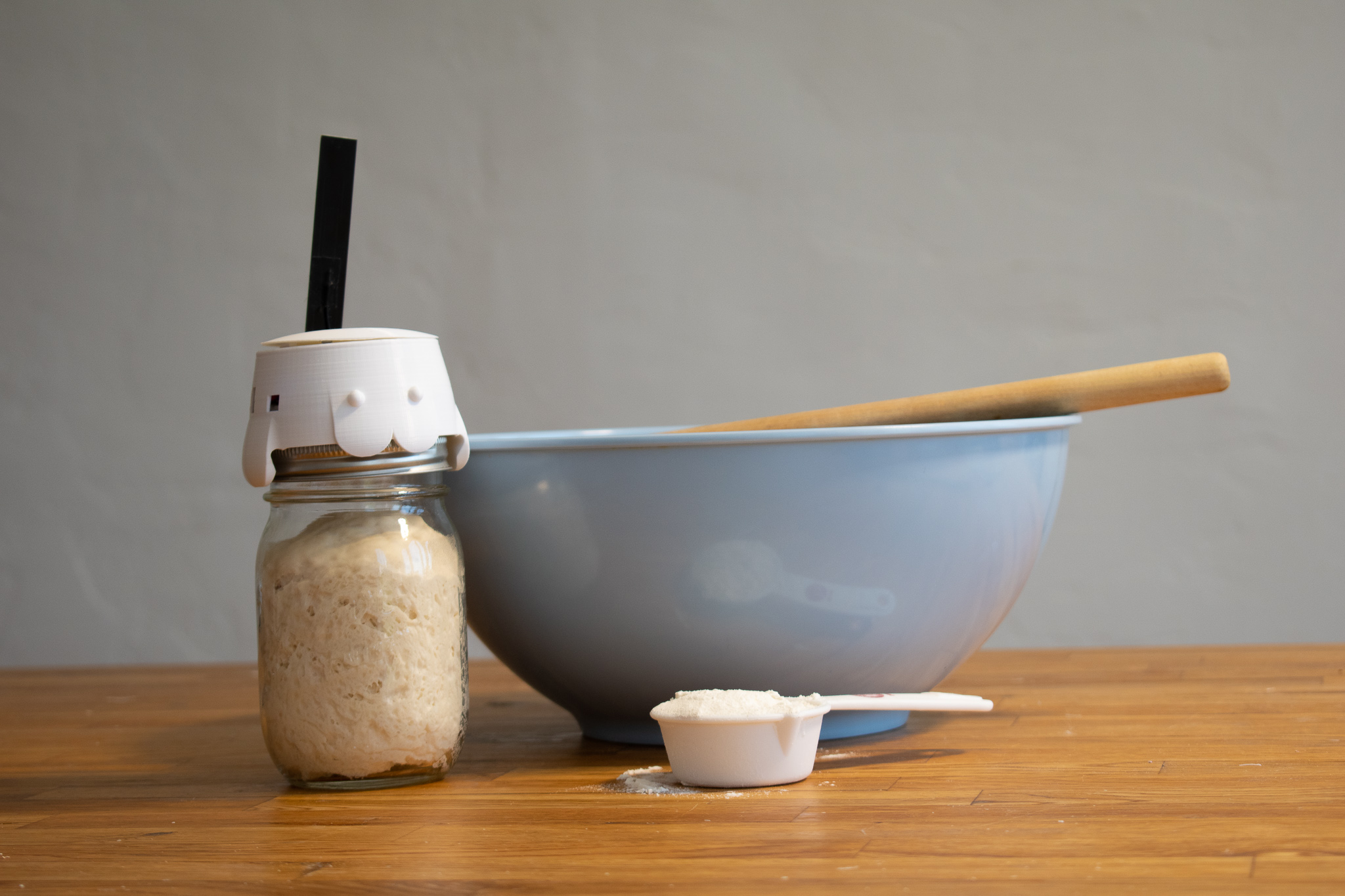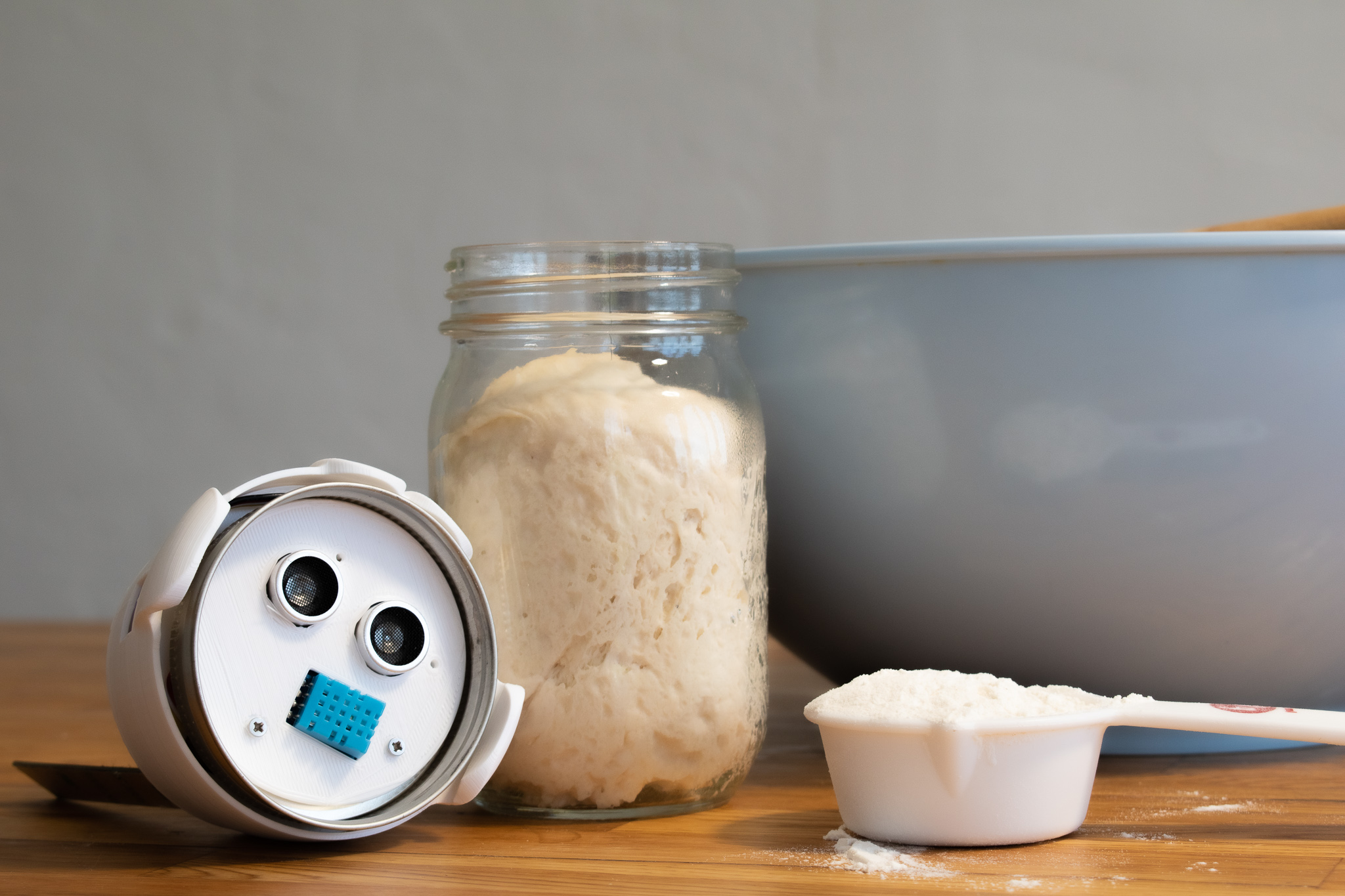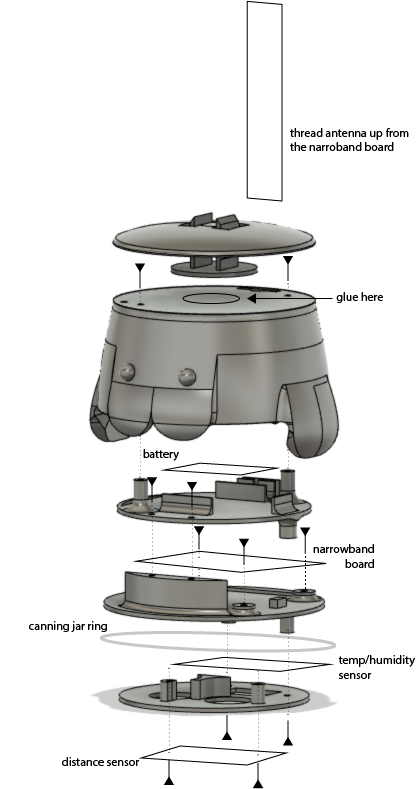A sourdough starter is a little yeast-driven pet that eats flour and water and makes sourdough. More and more people are keeping these delightful critters in their houses, feeding them when they start to look sluggish and baking bread with them every few days.
With Twilio's Narrowband IoT Developer Kit, we can build a little monitor that helps us keep track of our starter's temperature, humidity, and rise.
Twilio's Narrowband IoT dev kit happens to have some great sensors we can use to get started, and it's also designed for constant, low-power connectivity, which is what I want for this particular product. Cellular connectivity also means we don't have to do any setup or fight with our Wi-Fi routers.
The downside to Twilio Narrowband is that it only works in the US. If you're hoping to monitor your bread from outside the US, stay tuned! I'm planning another bread monitor in the future that connects with Super SIM, which is available everywhere.
- If you haven’t yet, sign up for a Twilio Account. If you sign up for a new account through this link, you’ll get an extra $10 in credit when you upgrade.
- 1 x Twilio Developer Kit for Narrowband IoT. Dev kits are currently ordered through the console. To order, first add your payment info to your Twilio account, then go to the Wireless order page and fill out the form.
- 1 x LiPo battery 3.7V 1900MAH (35mm x 50mm) (Note: this is not the one that comes in the kit)
- The Arduino IDE
- This repo
- An MQTT broker of choice. This build has been tested with Adafruit IO and Thingspeak, and has info on how to set that up in the
/nbiot-sourdough-monitorfolder of the repo. - The United States. Twilio Narrowband currently works in the US.
- A way to print the .stl files found in the
/enclosurefolder of this repo. You can use a 3D printer, or go through a third-party service like 3D Hubs. - 11 x M2.2 8mm screws
- 1 x Ball jar with 2 1/2 inch canning lid (the one where the center is removable)
- Hot Glue Gun (if you want your sourd.io to have ears and a hat)
Rather than replicating the tutorial here, I'm going to suggest that you follow the steps in the Narrowband Kit Quickstart to get your Twilio SIM registered and your libraries installed. The one exception to these instructions is that you should use your other LiPo battery rather than the thin, square one that comes in the Narrowband Kit.
Windows 10 users may run into problems connecting to their Narrowband Kit. If you do, follow this guide by Scott Hanselman to get going. You'll want to do this before the "Connect to the MQTT broker and publish messages" section in the Quickstart.
Check that the code compiles. You can even try uploading it and resetting the board to see if you can get it to come online. Once your board is making happy blue lights, then come back to this tutorial.
This kit comes with several sensors. We're going to use the Ultrasonic Distance sensor and the Temperature/Humidity sensor. Plug the distance sensor into D38 and the temp/humidity sensor into D20.
Download or clone this repo and open the folder nbiot-sourdough-monitor in Arduino. Add your MQTT info to the file mqttcreds-edit-and-rename.h and then-- you guessed it-- rename it to mqttcreds.h.
To fill out this file, you'll probably need to actually set up a broker. Instructions in the file tell you what you need to set up Adafruit IO or Thingspeak to work with this monitor, since those have an easy way to create public visualizations so you can share your bread's health with friends. Feel free to use a different broker of your choice as well!
You also may need to install additional libraries for the Grove Temperature/Humidity and Ultrasonic Ranger sensors. Those can be found at the following links:
https://github.com/Seeed-Studio/Grove_Temperature_And_Humidity_Sensor https://github.com/Seeed-Studio/Grove_Ultrasonic_Ranger
You can download these as .zip files and use Sketch > Include Library > Add .ZIP Library... to add them. Afterward, restart the Arduino IDE.
Next, put your board in bootloader mode by holding the bootloader button and tapping the reset button. Compile and upload nbiot-sourdough-monitor.ino.
If all is working, then your board should come online with a happy blue light. Open the Serial Monitor to see if the board is sending commands.
Navigate to your chosen MQTT broker and check out the commands coming into your channel or dashboard!
Print the .stl files in the /enclosure folder.
Remove the Grove Header from the Temperature/Humidity Sensor and solder the wires directly to the back of the board (opposite the blue sensor).
Assemble like this:
Screw the bread monitor onto your jar and put your sourdough starter in the jar!
Humidity is a particularly interesting one to watch. In the enclosed environment of the jar, the humidity produced as the yeast respirates is delightfully detectable. My monitor may be online right now; feel free to look at the data here.
Someone told me I should add license info here! Please simply don't be a jerk when using this repo and if you're interested in doing Something Serious with it, I'd love to hear. Reach out to me on Twitter or here on Github.
Putting this under the Apache 2.0 license, which is also what is used by the Twilio repo that the code sample is adapted from
Copyright 2020 Christine Sunu
Licensed under the Apache License, Version 2.0 (the "License"); you may not use this file except in compliance with the License. You may obtain a copy of the License at
http:https://www.apache.org/licenses/LICENSE-2.0
Unless required by applicable law or agreed to in writing, software distributed under the License is distributed on an "AS IS" BASIS, WITHOUT WARRANTIES OR CONDITIONS OF ANY KIND, either express or implied. See the License for the specific language governing permissions and limitations under the License.


